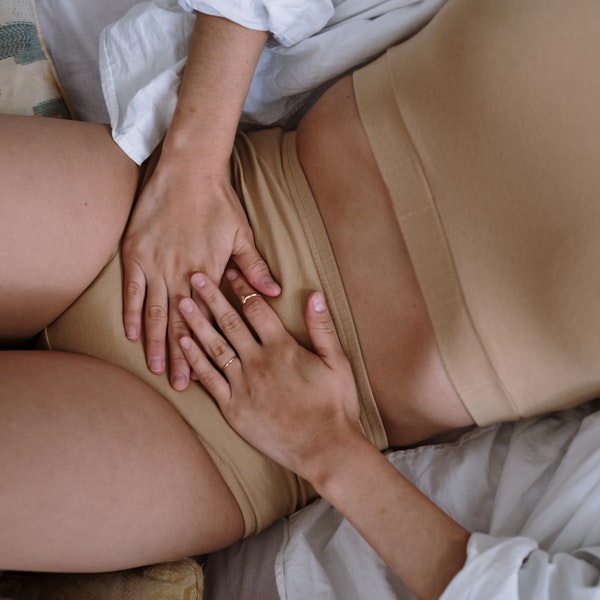Urinary tract infection affects your urinary tract, including your bladder (cystitis), urethra (urethritis) or kidneys (kidney infection). The urinary tract, from the kidneys to the urethral opening, typically doesn’t contain bacteria (germs) and is resistant to bacterial colonization despite frequent contamination of the distal urethra with colonic bacteria.
The urethra is close to the anus especially in the female and so bacteria from the large intestine, such as E. coli, can sometimes get into the urethra and can travel up to your bladder thus causing infections. Women are at greater risk of developing UTI than are men. Infections are limited to the bladder can be painful and annoying. However, serious consequences can occur if UTI spreads to your kidneys.
What is Urinary Tract Infection?
Urinary tract infection (UTI) is an infection of the urinary system. This can involve the kidneys (Pyelonephritis), the bladder (cystitis) and urethra- urethritis).
Classification Of Urinary Tract Infection
-
Uncomplicated or Simple UTI
Infection in a healthy, non-pregnant, pre-menopausal female patient with anatomically and functionally normal urinary tract.
-
Complicated UTI
Examples of a complicated UTI include:
- Infections occurring despite the presence of anatomical protective measures.UTI in males are by definition considered complicated UTI.
- Infections occurring due to anatomical abnormalities, for example, an obstruction, hydronephrosis, renal tract calculi, etc.
- Infections occurring due to an immune compromised state, for example, steroid use, post chemotherapy, diabetes, elderly population, HIV.
- Atypical organisms causing UTI.
- Recurrent infections despite adequate treatment (multi-drug resistant organisms).
- Infections occurring in pregnancy (including asymptomatic bacteriuria).
- Infections occurring after instrumentation, nephrostomy tubes, ureteric stents, suprapubic tubes or Foley catheters.
- Infections in renal transplant patients
- Infections occurring in patients with impaired renal function.
- Infections following prostatectomies or radiotherapy.

Causes Of Urinary Tract Infection
Urinary tract infections typically occur when bacteria enter the urinary tract through the urethra and begin to multiply in the bladder. About 95% of UTIs occur when bacteria ascend the urethra to the bladder and, in the case of pyelonephritis, ascend the ureter to the kidney. The remainders of UTIs are blood spread (hematogenous.)
UTI occurs when the major defenses designed to keep out such microscopic invaders, against urinary tract infection (UTI) fail. Viz:
- Complete emptying of the bladder during urination.
- Mechanisms that maintain the tract’s sterility like urine acidity.
- The vesicoureteral valve (the valve between the bladder and the ureter)
- Various immunologic and mucosal barriers.
Risk Factors
Risk factors for development of UTI in women:
- The normal female urinary tract has a comparatively short urethra, and therefore, carries an inherent predisposition to proximal seeding of bacteria. This anatomy increases the frequency of infections.
- Sexual intercourse.
- New sex partner within the past year.
- Use of Diaphragm and spermicide-coated condoms. This increases risk of UTI probably because of alterations in vaginal flora that allow overgrowth of Escherichia coli.
- Prolonged antibiotic use.
- History of UTIs in 1st-degree female relatives
- History of recurrent UTIs
- First UTI at early age
Risk factors for UTI in males:
- Benign Prostatic Hyperplasia (BPH) with obstruction, common in men over 50 years.
- Any other cause of obstruction of the urinary tract (e.g. Prostate Cancer, Urethral stricture.
- Recent instrumentation or indwelling catheters.
- Structural abnormalities, such as bladder diverticula
- Neurologic conditions that interfere with normal voiding (e.g., spinal cord injury).
- Cognitive impairment, fecal or urinary incompetence.
UTI caused by congenital factors manifests most commonly during childhood. Most other risk factors are more common in older patients.

Symptoms of Urinary Tract Infection
The symptoms of a UTI can include:
- Burning feeling when you urinate.
- Frequent or intense urge to urinate, even though little comes out when you do.
- Cloudy, dark, bloody, or strange-smelling urine.
- Feeling tired or shaky.
- Fever and chills (a sign that the infection may have reached your kidneys)
- Pain or pressure in your back or lower abdomen.
How To Prevent UTI
The following tips can help you avoid getting UTI:
- Emptying the bladder often as soon as there is a need to urinate. Don’t hold urine for a long time.
- Wipe from front to back after using the toilet.
- Drink lots of water.
- Choose showers over baths.
- Stay away from feminine hygiene sprays, scented douches, and scented bath products; they’ll only increase irritation.
- Cleaning of the genital area before sex.
- Urinating after sex to flush out any bacteria that may have entered theurethra.
- Changing birth control method. Diaphragms, or unlubricated or spermicide-treated condoms, can all contribute to bacterial growth.
- Keeping the genital area dry by wearing cotton underwear and loose-fitting clothes. Don’t wear tight jeans and nylon underwear; they can trap moisture, creating the perfect environment for bacteria growth.
Urinary Tract Infection Diagnosis
Urine collection is key in diagnosing UTI. Please, note that if STI is suspected, urethral swab sample is to be taken first before voiding.
Urine collection is done by:
- Clean-catch midstream urine
-
- The urethral opening is washed with a mild, nonfoaming disinfectant and air-dried.
- Contact of the urinary stream with the mucosa should be minimized by spreading the labia in women and by pulling back the foreskin in uncircumcised men.
-
- The first 5 mL of urine is not captured; the next 5 to 10 mL is collected in a sterile container.
- or catheterization.
This is preferable in older patients (who typically have difficulty obtaining a clean-catch specimen) and in women with vaginal bleeding or discharge. Many clinicians also use catheterization to obtain a specimen if evaluation includes a pelvic examination.
Urinalysis
Here, dipsticks are commonly used.
- A positive nitrite test on a freshly voided specimen, which indicates rapid bacterial replication, is highly specific for UTI, but not very sensitive.
This renders results unreliable if the specimen is not tested immediately.
- The leukocyte esterase test is very specific for the presence of > 10 WBCs/mcL and is fairly sensitive

Urine Microscopy
Microscopic Examination Of urine is useful but not definitive. Pus in urine (Pyuria) is defined as ≥ 8 white blood cells (WBCs)/mcL of uncentrifuged urine, which corresponds to 2 to 5 WBCs/high-power field in spun sediment. Most truly infected patients have > 10 WBCs/mcL. Pus in urine (Pyuria) in the absence of bacteriuria and of urinary tract infection (UTI) is possible in patients with viz:
- Kidney stones.
- Appendicitis.
- Inflammatory bowel disease.
- If the sample is contaminated by vaginal WBCs.
Women who have pain when urinating and pus in urine but without significant bacteriuria have a condition called the urethral syndrome or dysuria-pyuria syndrome.
-
Urine culture
Diagnosis by culture is not always necessary. If done, diagnosis by culture requires demonstration of significant bacteriuria in properly collected urine and should be done within 2 hours of specimen collection; if not, the sample should be refrigerated.
Cultures are recommended in patients whose characteristics and symptoms suggest complicated UTI or an indication for treatment of bacteriuria. Common examples include the following:
- Pregnant women.
- Postmenopausal women.
- Men.
- Pre-pubertal children.
- Patients with urinary tract abnormalities or recent instrumentation.
- Patients with immunosuppression or significant comorbidities.
- Patients whose symptoms suggest Pyelonephritis or sepsis.
- Patients with recurrent UTIs (≥ 3/year)
Samples containing large numbers of epithelial cells are contaminated and unlikely to be helpful. An uncontaminated specimen must be obtained for culture. Culture of a morning specimen is most likely to detect UTI. Samples left at room temperature for > 2 hours can give falsely high colony counts due to continuing bacterial proliferation. Criteria for culture positivity include isolation of a single bacterial species from a midstream, clean-catch, or catheterized urine specimen.
-
Complete blood count (CBC)
-
Electrolytes/urea/creatinine
-
Structural abnormalities assessment
It is usually not indicated except in the following conditions:
- If a patient has ≥ 2 episodes of pyelonephritis(infection of one or both kidneys).
- If infections are complicated.
- If Kidney stones (Nephrolithiasis) is suspected.
- If there is painless gross hematuria(blood in the urine) or new renal insufficiency.
- If fever persists for ≥ 72 hours.
-
Urinary tract imaging
Choices include:
- Ultrasonography.
- CT
- Intravenous urography (IVU).
- Voiding cystourethrography.
- Retrogradeurethrography
- Cystoscopy.
Urologic investigation is not routinely needed in women with symptomatic cystitis or asymptomatic recurrent cystitis, because findings do not influence therapy. Children with UTI often require imaging.
Urinary Tract Infection Treatment

-
Medical
Non-septic, stable patients may be treated as outpatients. Broad-spectrum, empiric antibiotics should always be switched to a targeted narrow-spectrum antibiotic, if possible, once culture results are available. Patients who present with repeat infections may also be initially treated as per their previous urine culture results until new cultures are available. In most cases, treatment response should be evident in 24 to 48 hours. A poor response may indicate an
- Inappropriate antibiotic selection.
- Polymicrobial infections.
- Atypical infections.
- Hydronephrosis.( swelling in the kidneys when urine can’t drain from them and builds up as a result)
- Obstructing stone causing pyonephrosis,
-
Surgical
Surgical correction is usually required for:
- Obstructive uropathy.
- Anatomic abnormalities.
- Neuropathic urinary tract lesions such as compression of the spinal cord
Catheter drainage of an obstructed urinary tract aids in prompt control of UTI. Occasionally, a renal cortical abscess or perinephric abscess requires surgical drainage. Instrumentation of the lower urinary tract in the presence of infected urine should be deferred if possible. Sterilization of the urine before instrumentation and antibiotic therapy for 3 to 7 days after instrumentation can prevent life-threatening urosepsis.
Conclusion
The healthy urinary tract like the other systems is normally able to resist bacterial infections. Numerous studies have indicated that the frequency of UTI is greater in women than in men.
The large intestine and the perinea area serve as a reservoir for pathogenic bacteria such as Escherichia coli. One in five adult women experience UTI in her life and it is extremely common, clinically apparent, worldwide patient problem so try to get a proper diagnosis and the treatment.

